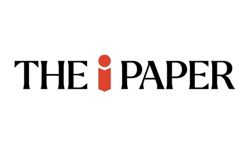Only a few years ago, the World Association of Newspapers (WAN) started to include the circulation of free daily newspapers in their statistics. A smart move. Declining circulation of paid newspapers now was partly masked by the circulation increase of free dailies, which tripled between 2003 and 2008 from 14 to 42 million. This increase, plus rising circulation in developing countries like China and India, must have made WAN meetings fun. Talking about 2008, WAN’s chairman Gavin O’Reilly said: “Global newspaper circulation increased 1.3% in 2008, to almost 540 million daily sales, and was up 8.8% over five years. When free dailies are added, circulation rose 1.62% in 2008 and 13% over five years.” Crisis? What crisis?
In 2008, however, the fun was already over for free dailies. Circulation was in fact stable compared to 2007 – the reported increase was a combination of sloppy research and incomplete data. For the full year 2009, it will be quite a task to come up with another circulation increase. O’Reilly will have to rely solely on Chinese and Indian publishers (who can do amazing tricks with numbers). No matter how you look at it, circulation of free dailies is down, and it went down very rapidly. From 42 million in 2008, it dropped to 37 million at the end of 2009 (-12%). Particularly in Europe, where 60% of the free dailies are distributed, the decline is substantial. Circulation went down by 5% in 2008 and by 18% in 2009. Asia and the Americas (mainly the USA) showed the first decline (3% in both cases) ever.
European carnage
Looking in detail at the European market, the situation resembles a genuine bloodbath at first sight. In the UK, there are three free dailies: Metro, City AM, the Evening Standard, but in the past a dozen free dailies closed down. In Sweden, only one of the three national titles remains; in Denmark, two of the five national free dailies closed down, plus all free local papers; in Spain, the number of free dailies went from 34 in 2006 to 14 in 2010; in Switzerland, there were eight free dailies in 2008, now only three of those are still in business. Almost all remaining papers closed local editions and cut circulation. In Germany, the largest newspaper market in Europe, a dozen free newspapers were launched in the last decade, none survived (although Axel Springer will start a free airline-distributed newspaper this year). Eastern Europe (Bulgaria, Hungary, the Czech Republic, the Ukraine, Poland, Croatia, Turkey) shows the same picture: less titles and a lower circulation for the remaining ones.
There were free dailies in 33 European countries in 2009. Of these, in Germany, Lithuania and the Ukraine, free dailies vanished completely while in 23 other countries, the number of titles and the circulation dropped (see graph). Exceptions are some smaller countries (Latvia, Estonia, Serbia, Luxembourg, Andorra), Belgium and especially France, where the industrial conglomerate of Vincent Bolloré launched six free dailies in the period 2006–2009 (the last one in the already crowded Strasbourg market, one week before Christmas).
The rise of the monopolist
This could suggest that the end of free papers is near, but a closer look at some markets reveals that there are also happy monopolists and at least half-happy market leaders. With almost a dozen closures, the UK does not seem to be a very fertile ground for frees, but Associated Newspapers’ Metro UK still is one of the most profitable free dailies in the world; the recession forced the paper to cut costs like all newspapers, but its position is still unchallenged – with ten different editions and a total circulation of more than 1.3 million, it is also the largest free newspaper in the world.
In Switzerland, the best-read paper is free, 20 Minuten, launched ten years ago by Norwegian publisher Schibsted and acquired in 2005 by incumbent publisher Tamedia; only one national competitor remains in the German speaking part: Blick am Abend (Ringier); in the French speaking part, the 20 Minutes edition is monopolist after it forced Le Matin Bleu into a merger.
In Sweden, Metro International published its most profitable edition for many years – in 2002, however, Bonnier (publishers of Dagens Nyheter / Expressen) launched City, while in 2006 Schibsted (Aftenbladet / Svenska Dagbladet) joined in with Punkt SE. Both new papers could cooperate with the paid papers of their owners. Metro soon got in trouble (huge discounts on advertising rates) and only recovered after Bonnier pulled out and the company made peace with Schibsted by offering them a 35% share in Metro Sweden in exchange for the closure of Punkt SE.
It seems that the best position for a free newspaper is having no or little competition and being part of a major newspaper group. The merger between Metro and Herald AM in Ireland is the most recent example of this trend.
A monopoly was actually quite rare some years ago. In the thirty European countries with free dailies in 2010, however, monopoly now seems to be the dominant model: Finland (Metro by Sanoma), Hungary (Metro International), Poland (Metro by Agora), Iceland (Frettabladid), French-speaking Switzerland (20 Minutes by Tamedia), Ireland (Metro Herald), Croatia (24 Sata by Styria), Turkey (24dk by the Dogan Group) and Bulgaria (19 Minutes) moved from competition to monopoly while there are near-monopolies in Sweden (Metro in Stockholm and Gothenburg) and the Czech Republic (Metro by Mafra). Belgium (Metro by Concentra), Latvia (5min), Estonia (Linnaleht), Serbia (24 Sata by Ringier) and Slovenia (Zurnal24 by Styria) never had more than one free daily. The majority of these free dailies are owned by publishers that also operate paid newspapers.
Combining the efforts of paid and free newspapers is not really a new trend, but it has developed substantially over the last few years. In Europe, publishers of paid newspapers control more than half of the circulation of free dailies in 2010. In almost all of these cases, distribution, back office operations and printing facilities are shared between paid and free papers. The next step is often offering joint advertising packages; Metro in Sweden and Denmark offers these options in both countries, although Schibsted (Sweden) and JP/Politiken (Denmark) only have a minority interest in both Metro editions. In some cases also, content is shared between paid and free dailies.
Having no competitors is extremely healthy for advertising rates, as free papers are perfect substitutes for each other, and at the same time offer quite unique audiences to advertisers: younger than readers of paid newspapers, but also larger and less fragmented than the online, TV or magazine audiences.
Except for launching in a crowded market and, as a result, giving huge discounts to advertisers, there is only one other thing to avoid: being too innovative. Free sports papers, free evening papers, free weekend editions, free quality papers, free home delivered papers... almost all of these experiments have failed miserably. Which makes the Evening Standard something to watch very carefully...
R.I.P. (Closed free dailies in the UK)
* Birmingham Daily News 1984-1991 (Tuesday-Friday).
* Tonight (London) 1994, distributed at tube stations.
* Manchester Metro 1999-2001, GMG, merged with Metro.
* Morning News (Newcastle) 2000, Metro International.
* Standard Lite 2004-2006.
* FTpm 2005-2006, a free digest version of the Financial Times.
* MEN Lite 2005-2006, digest version of Manchester Evening News.
* Argus Lite 2006-2007 (Brighton).
* London Lite 2006-2009, Associated’s attempt to spoil Murdoch’s paper
* Thelondonpaper 2006-2009.
* The Record PM 2007-2009 (Scotland).
* Manchester Evening News 2006-2009, now only free distribution on two days a week.










